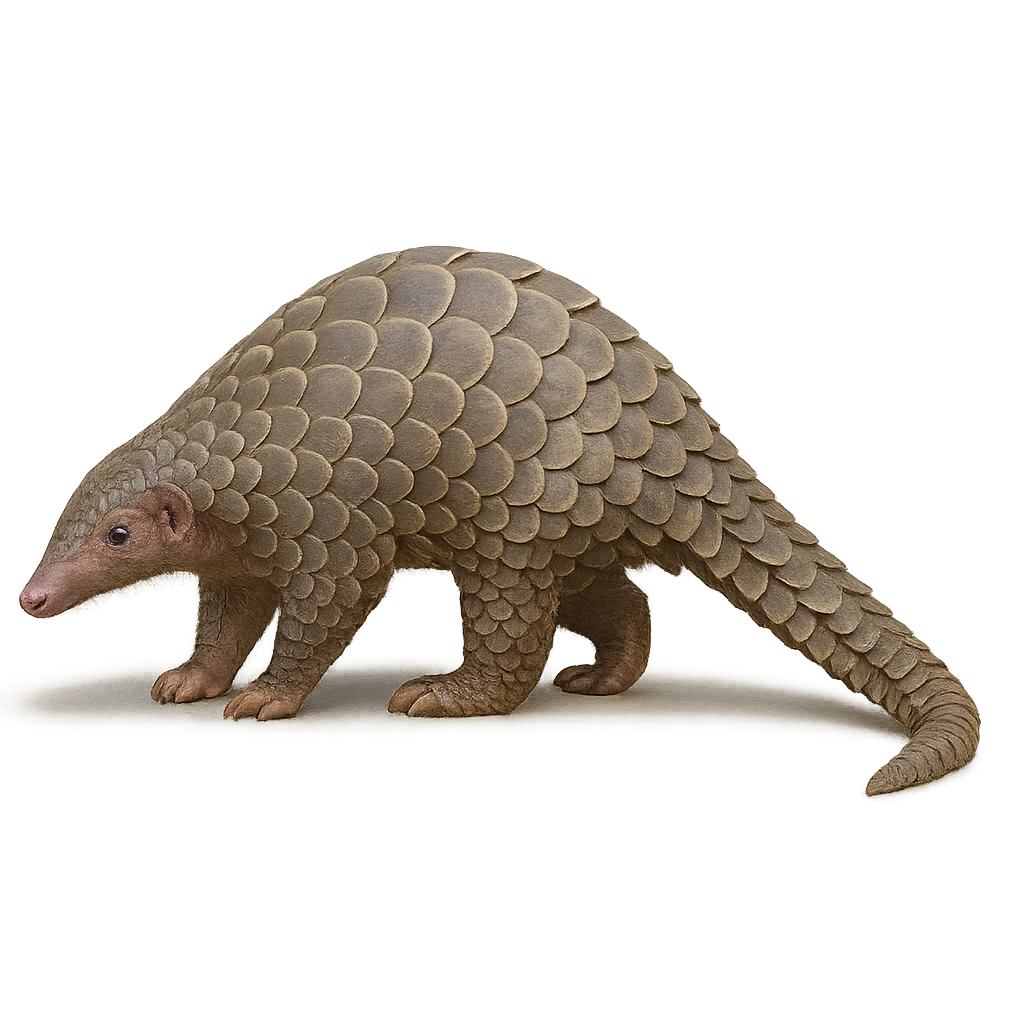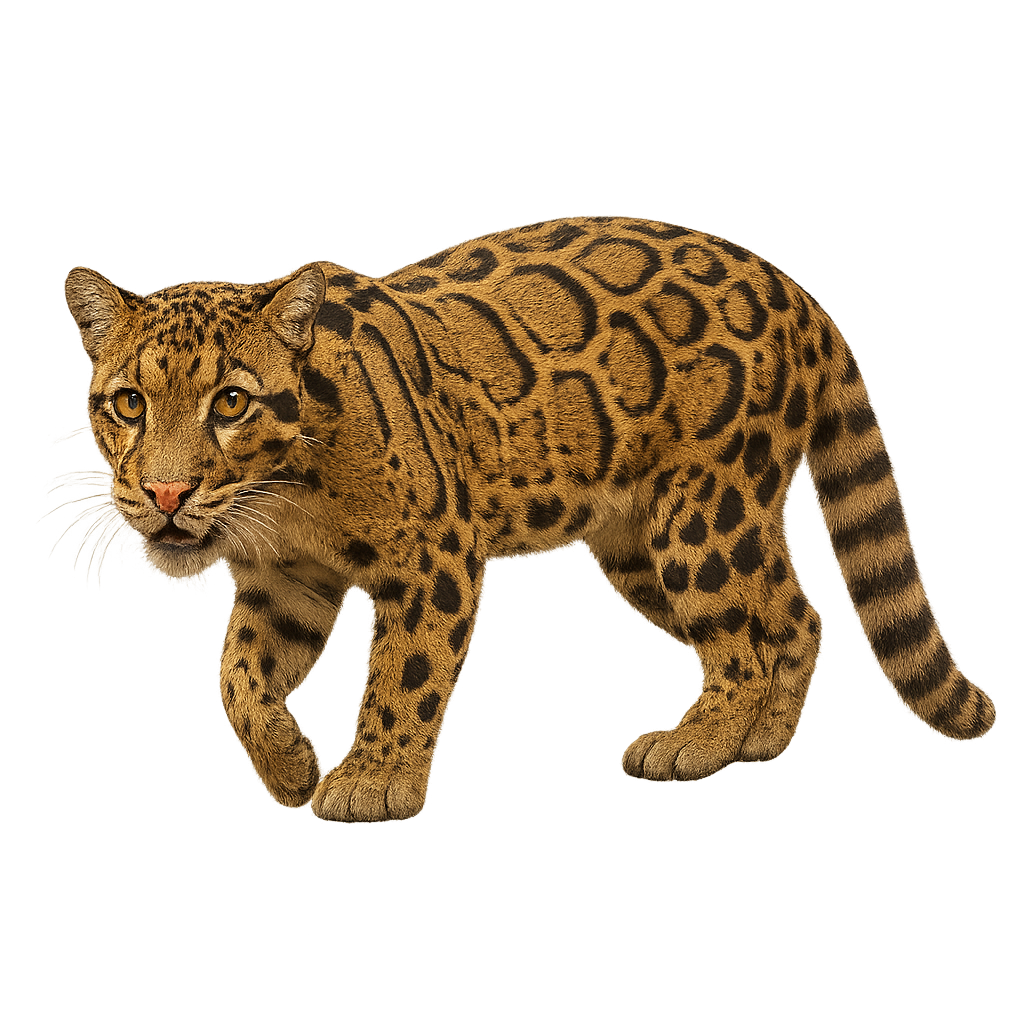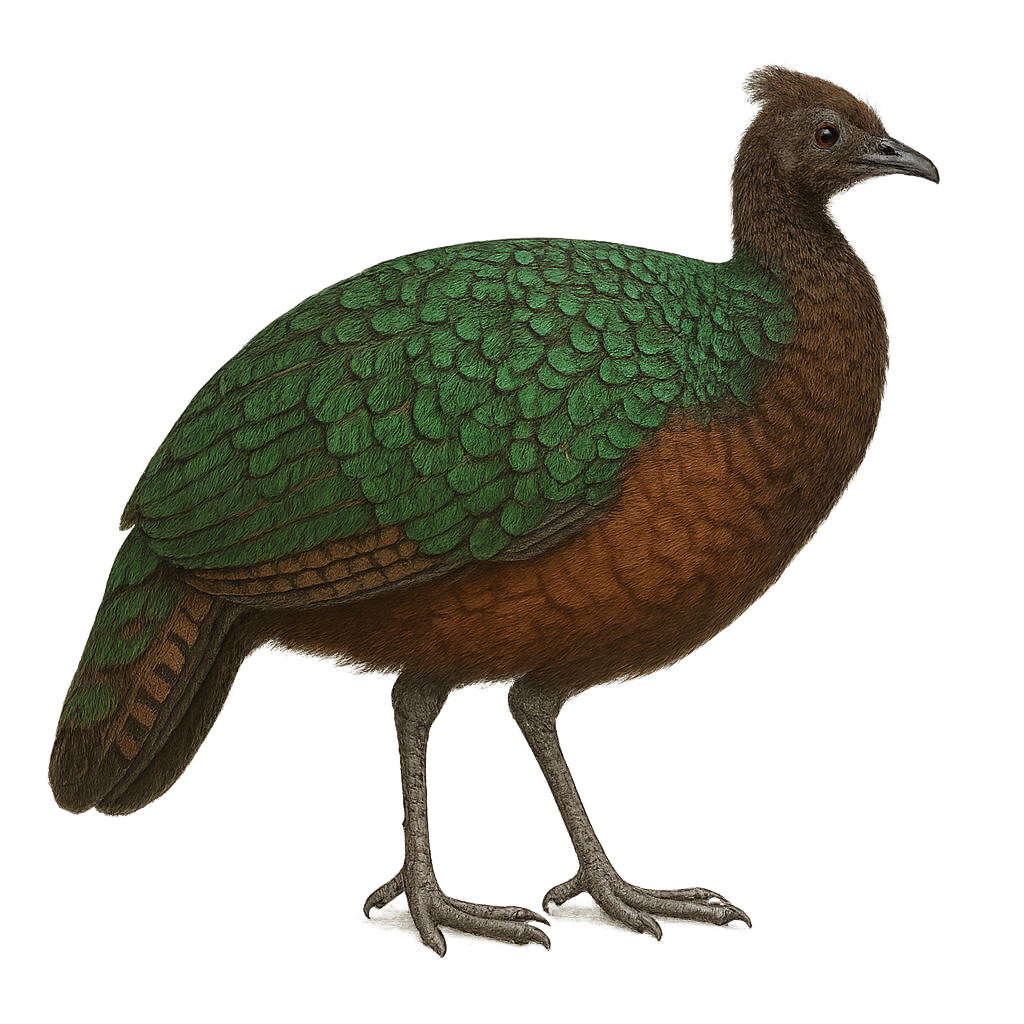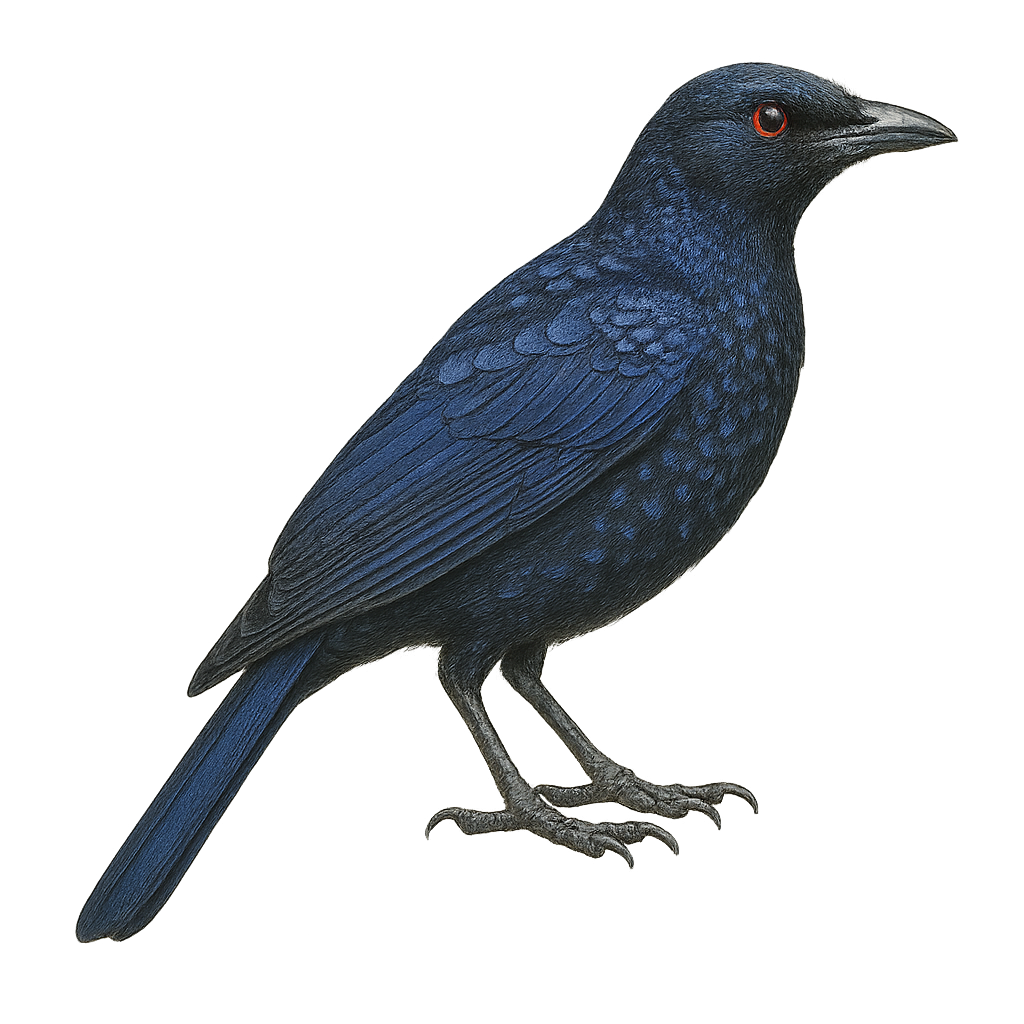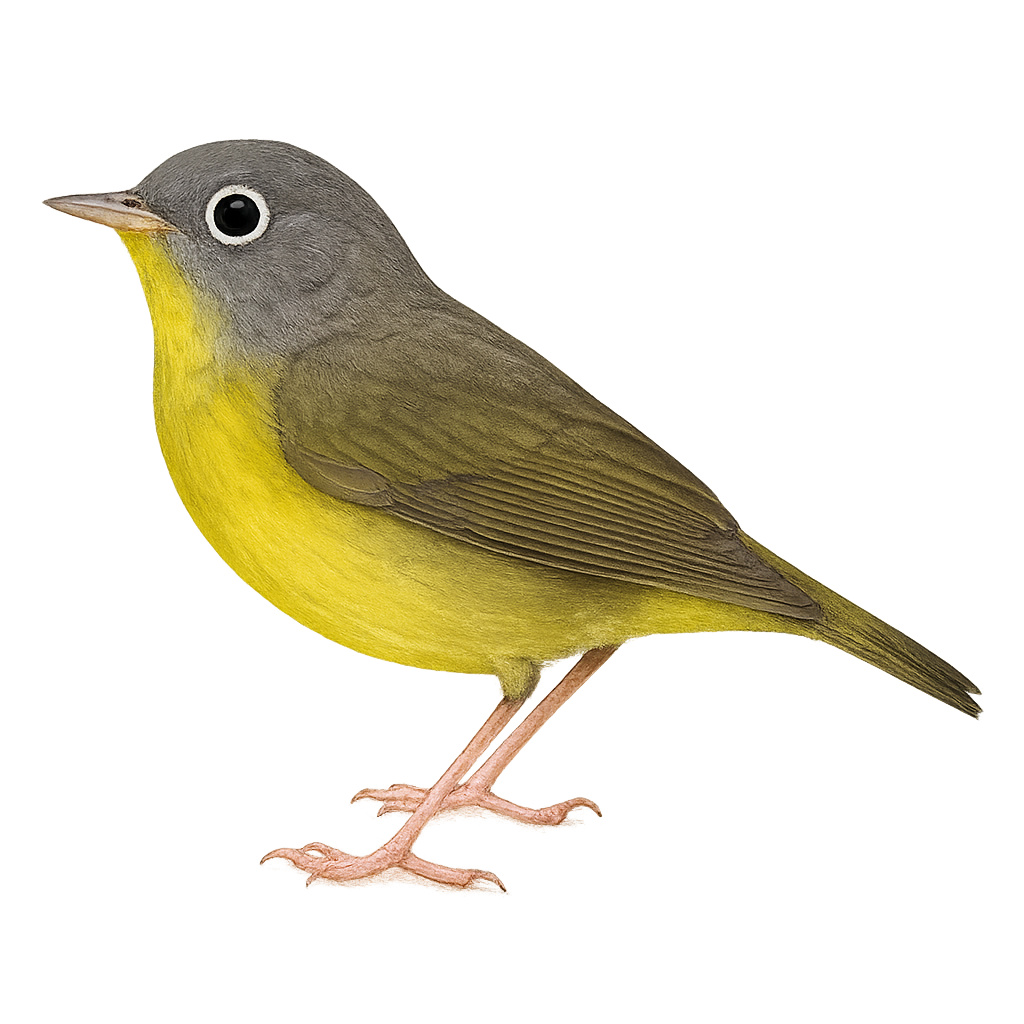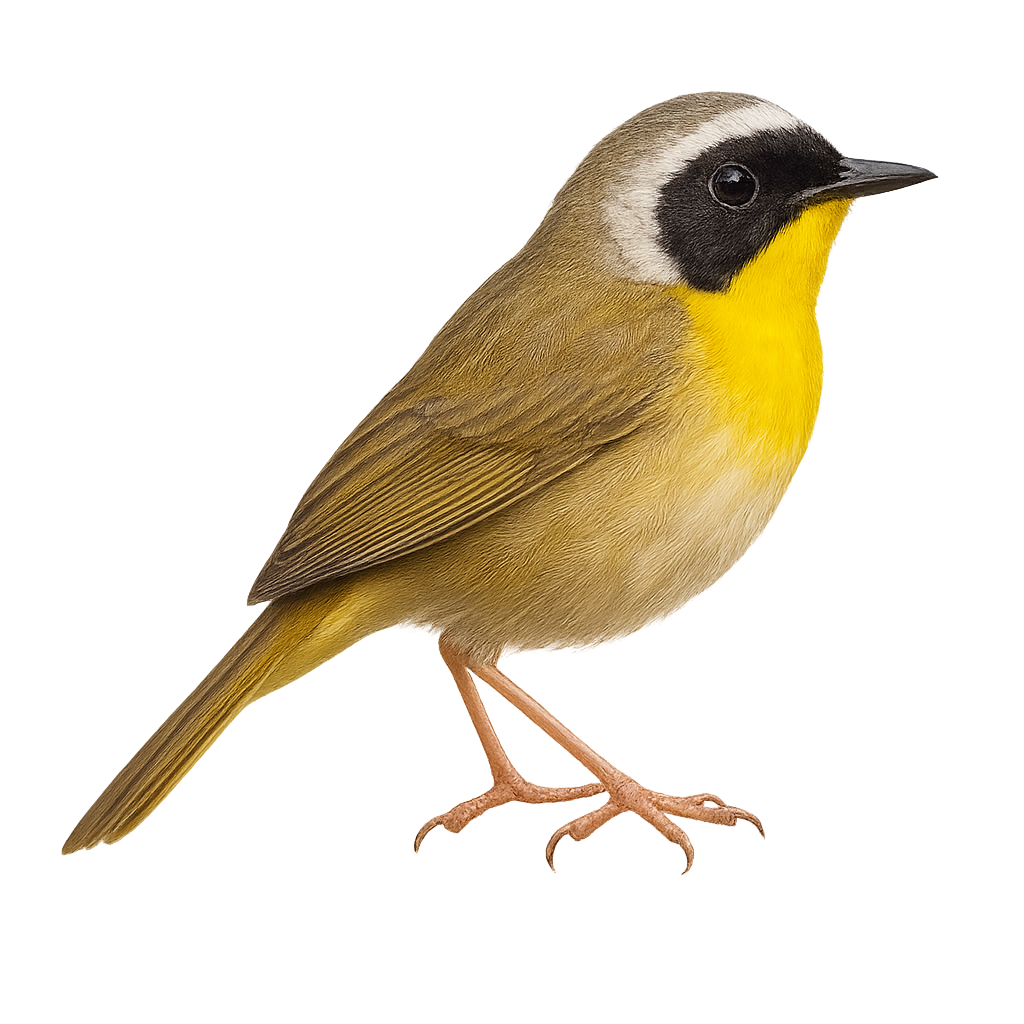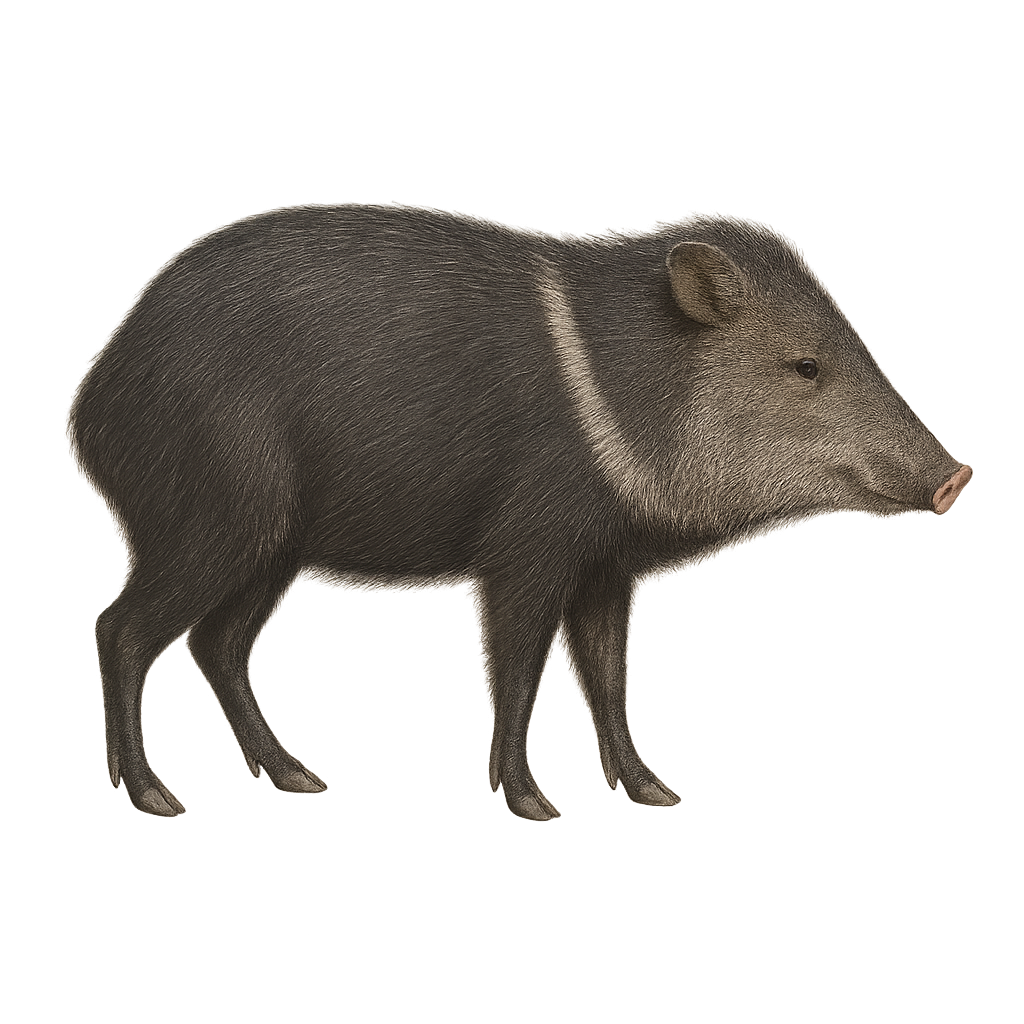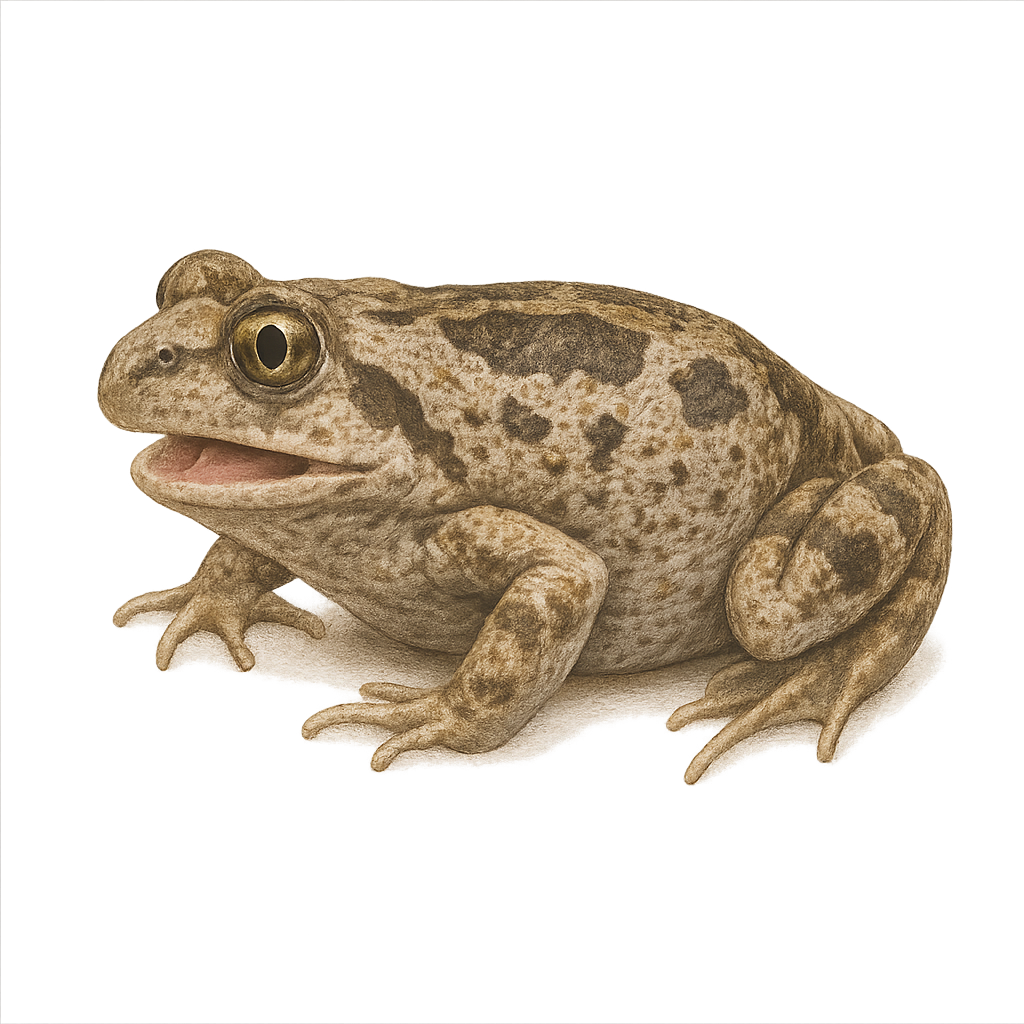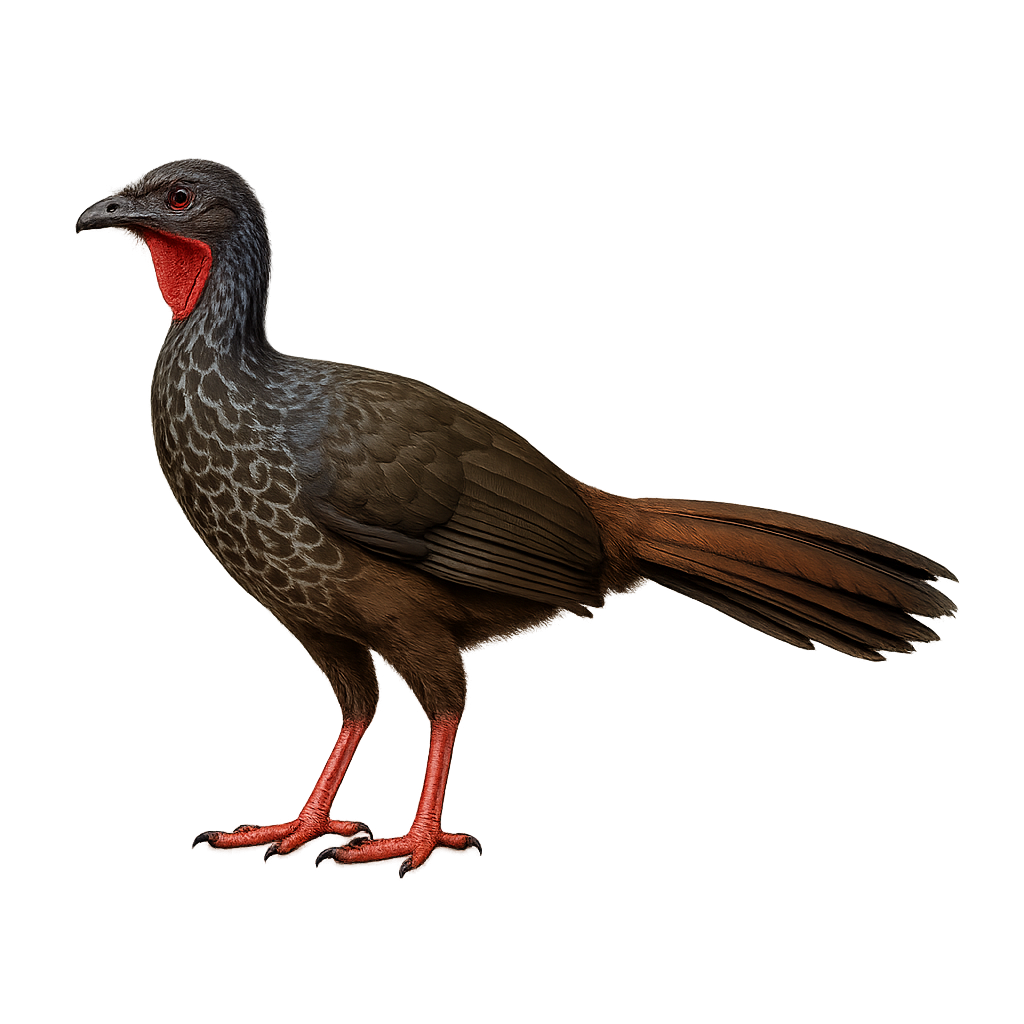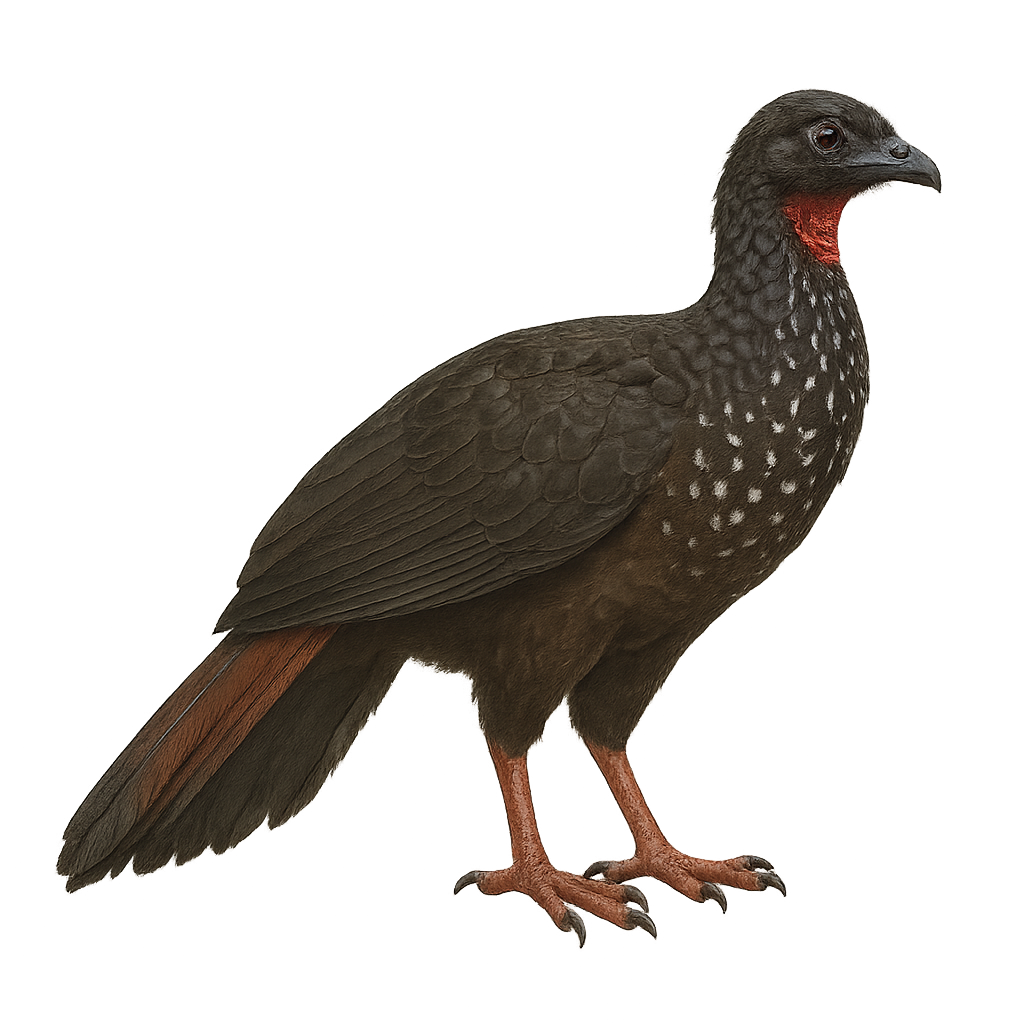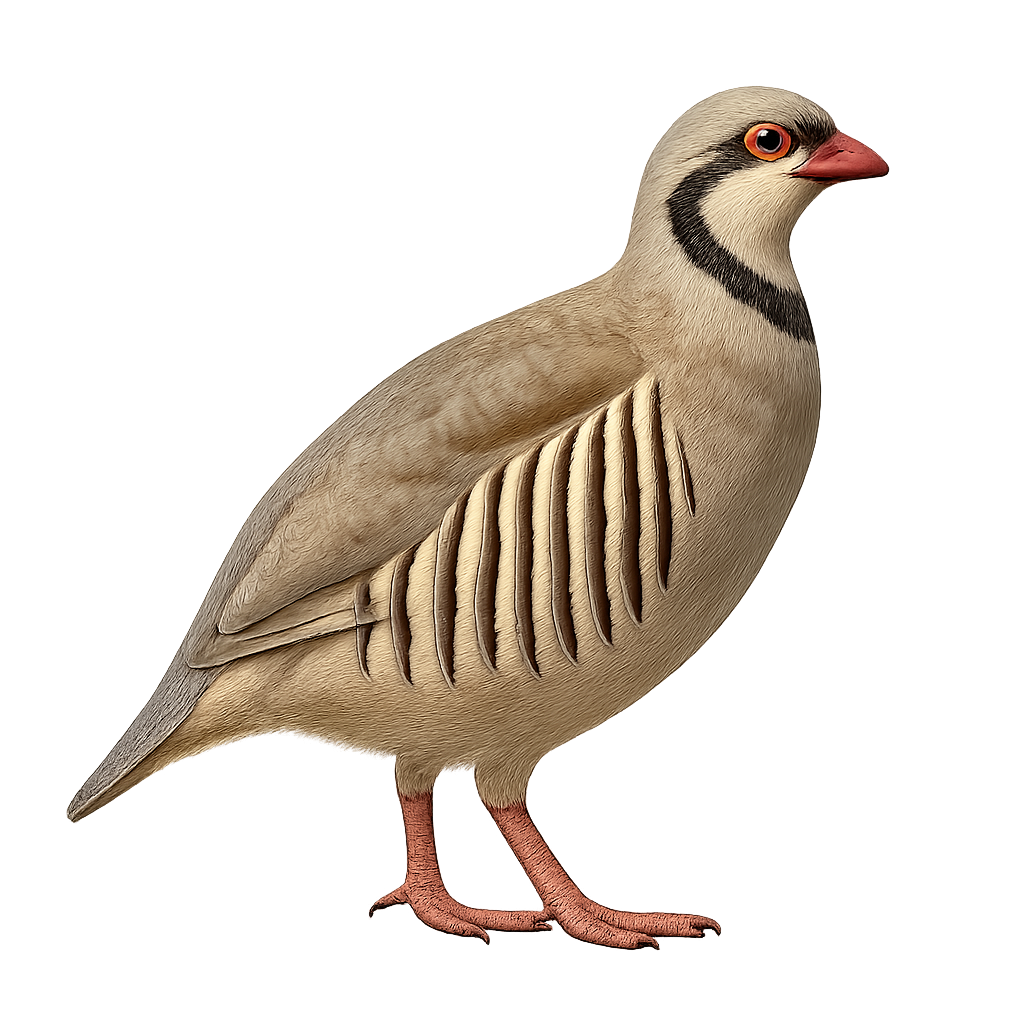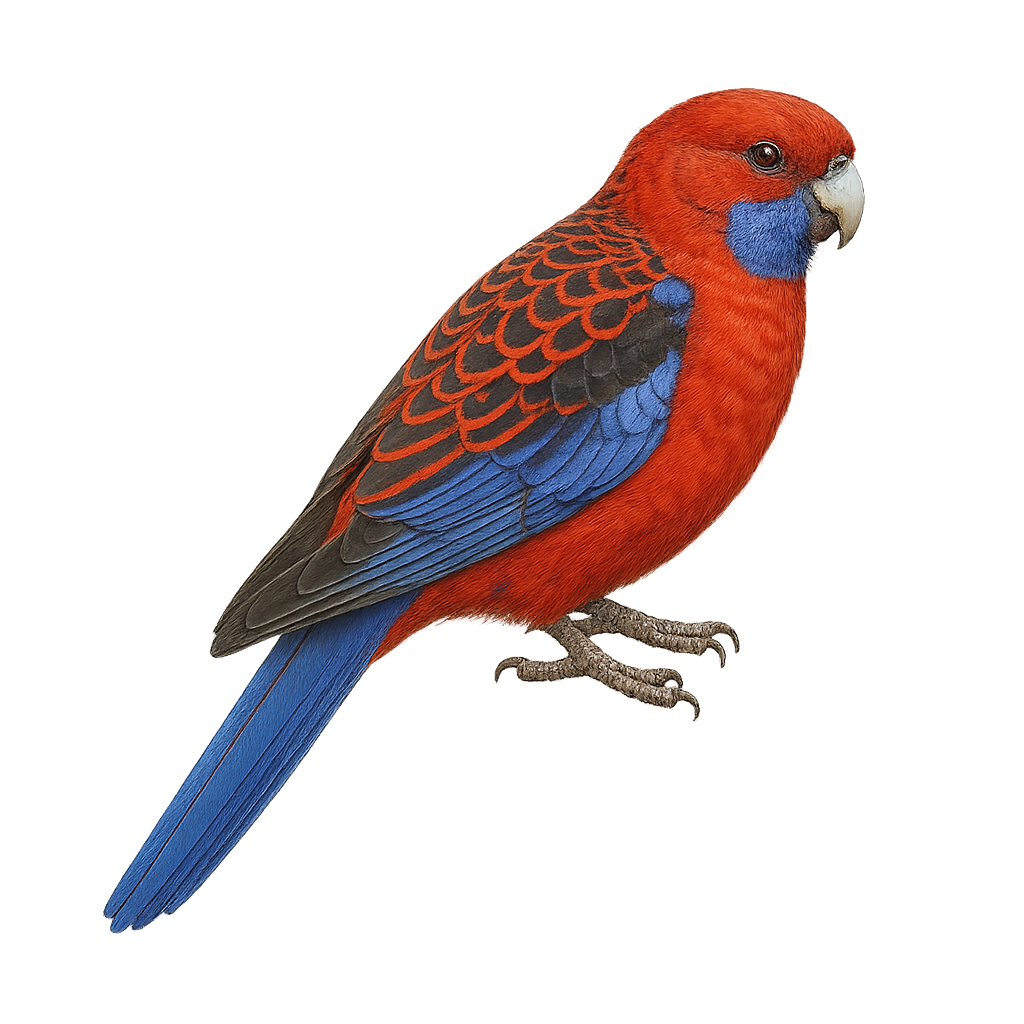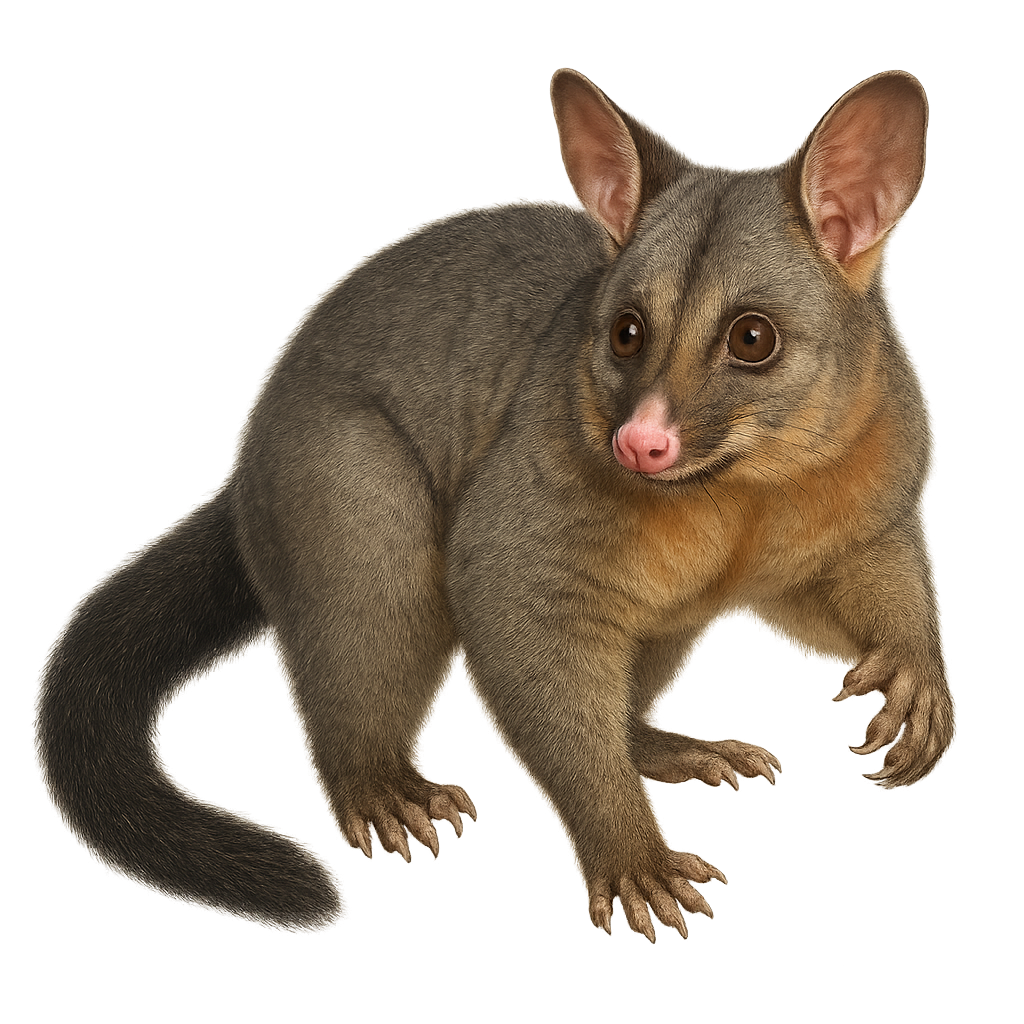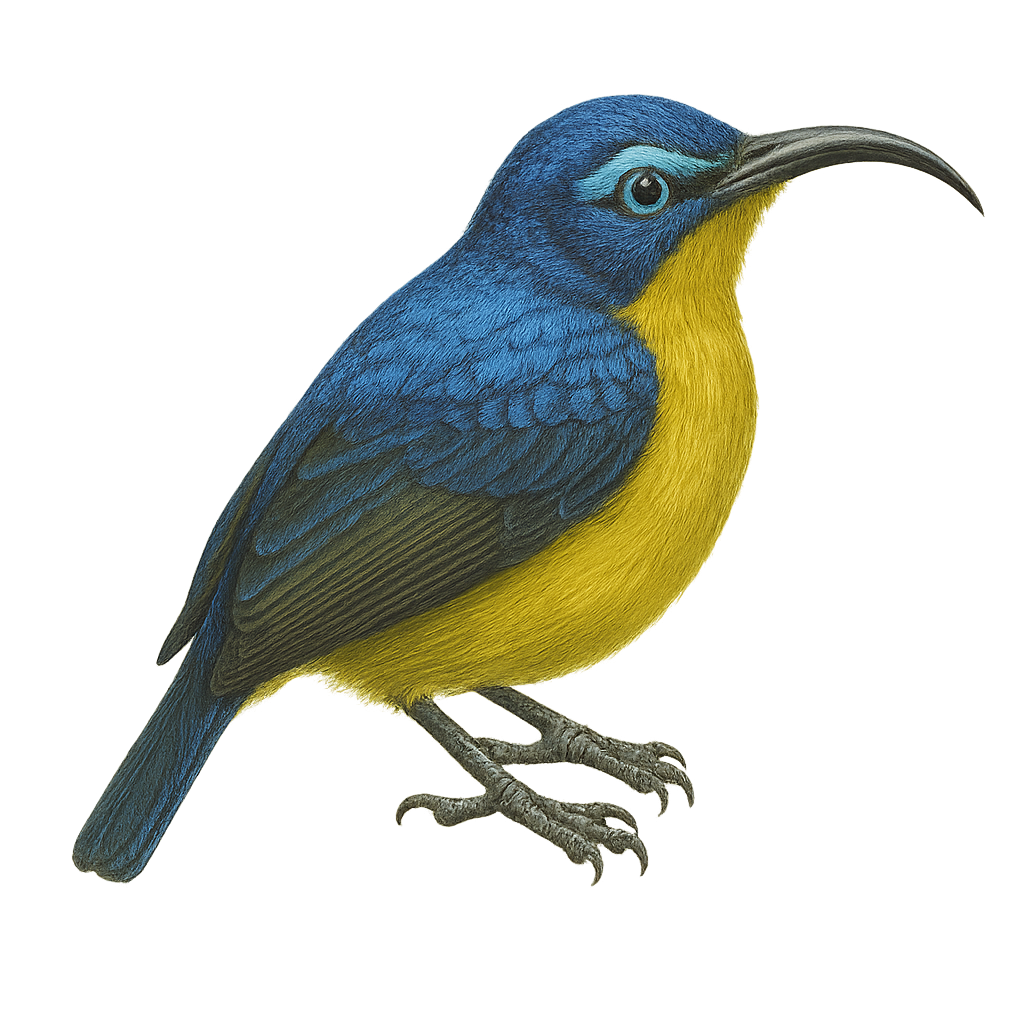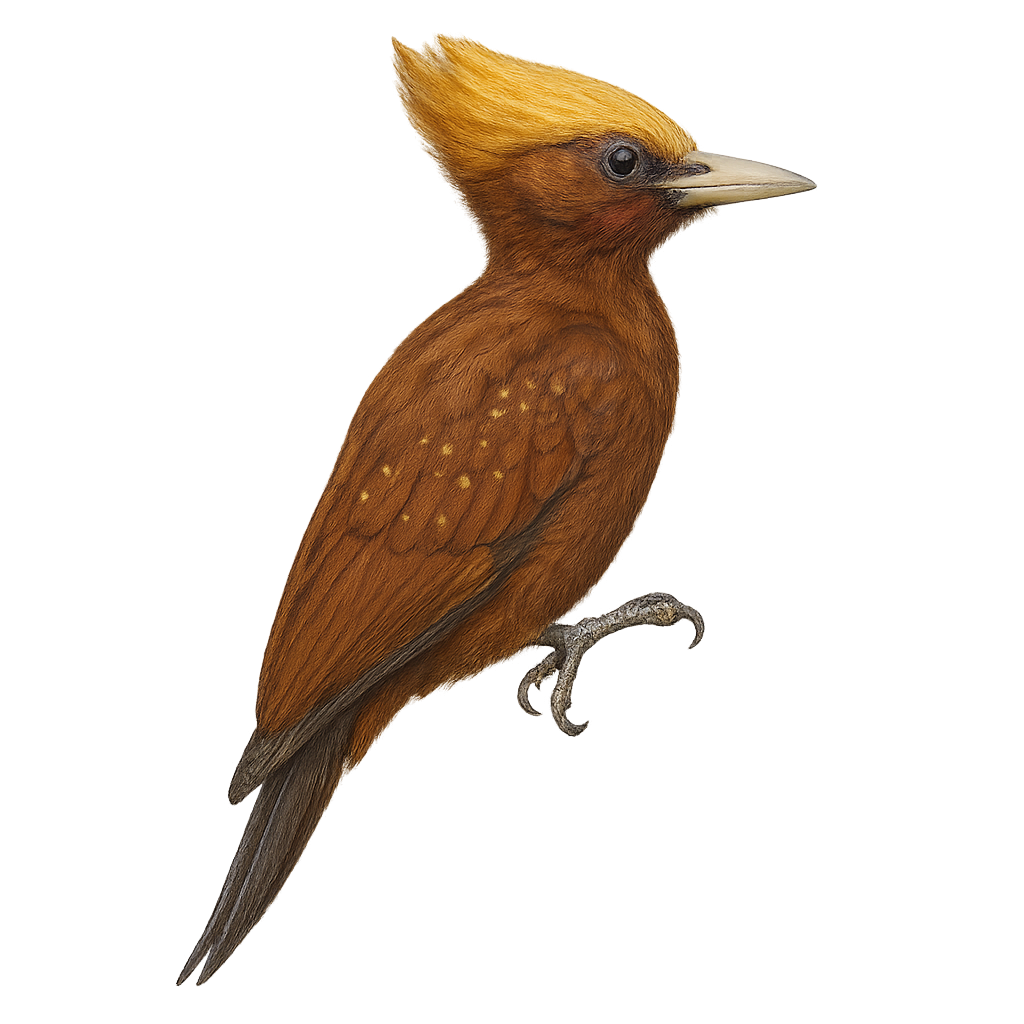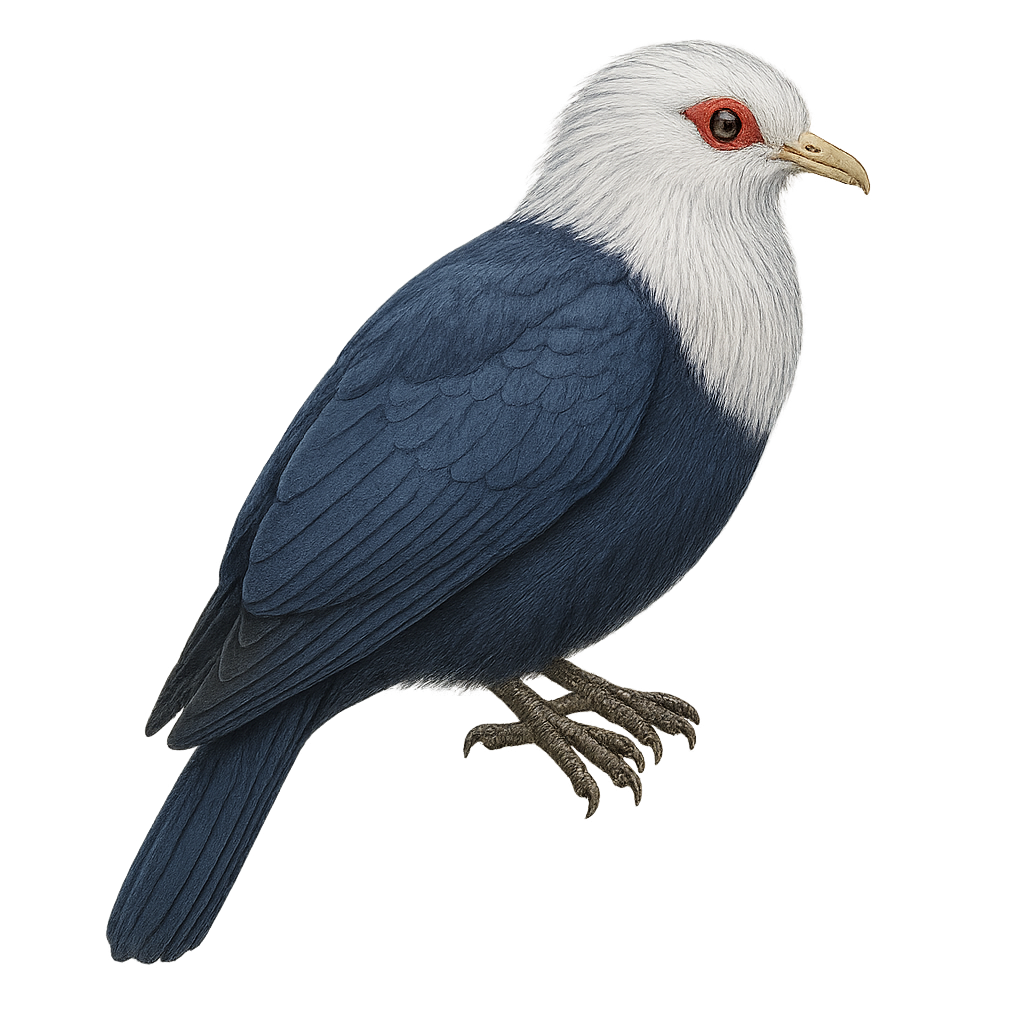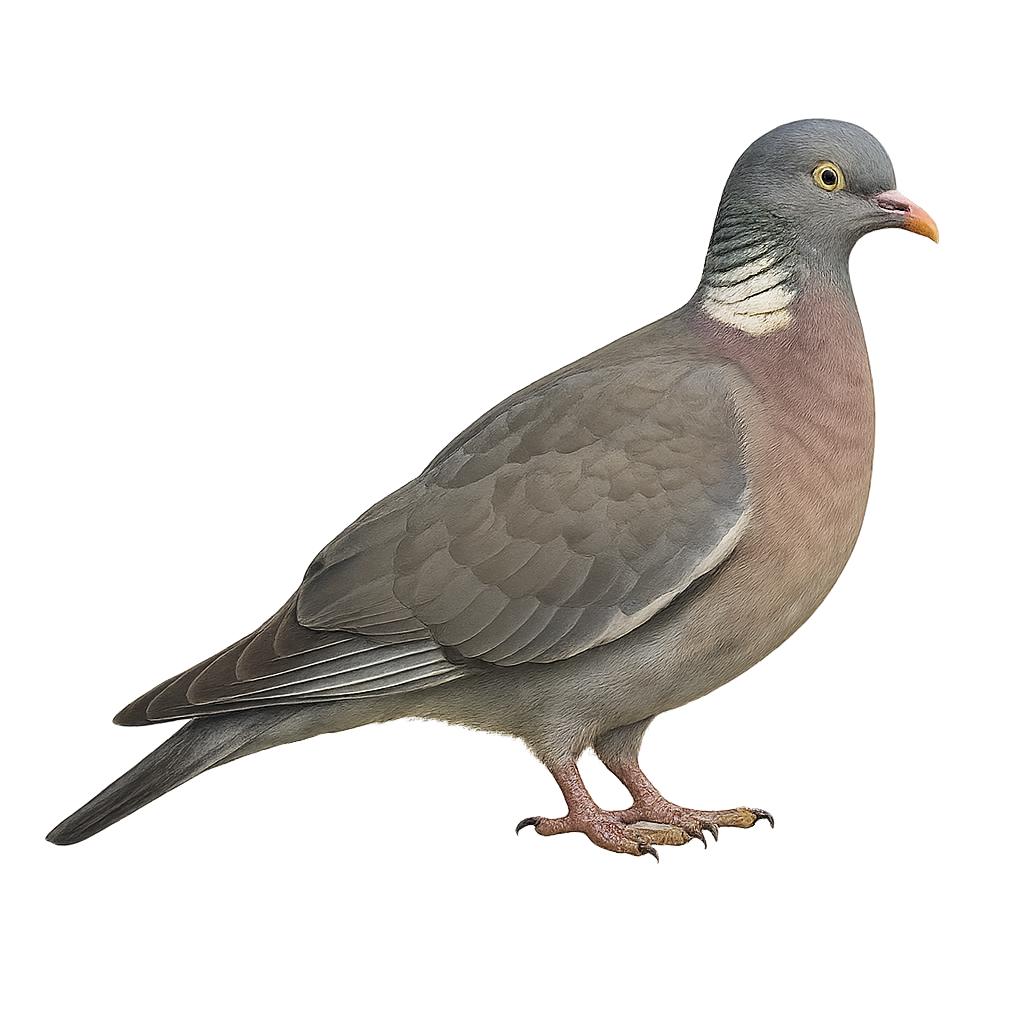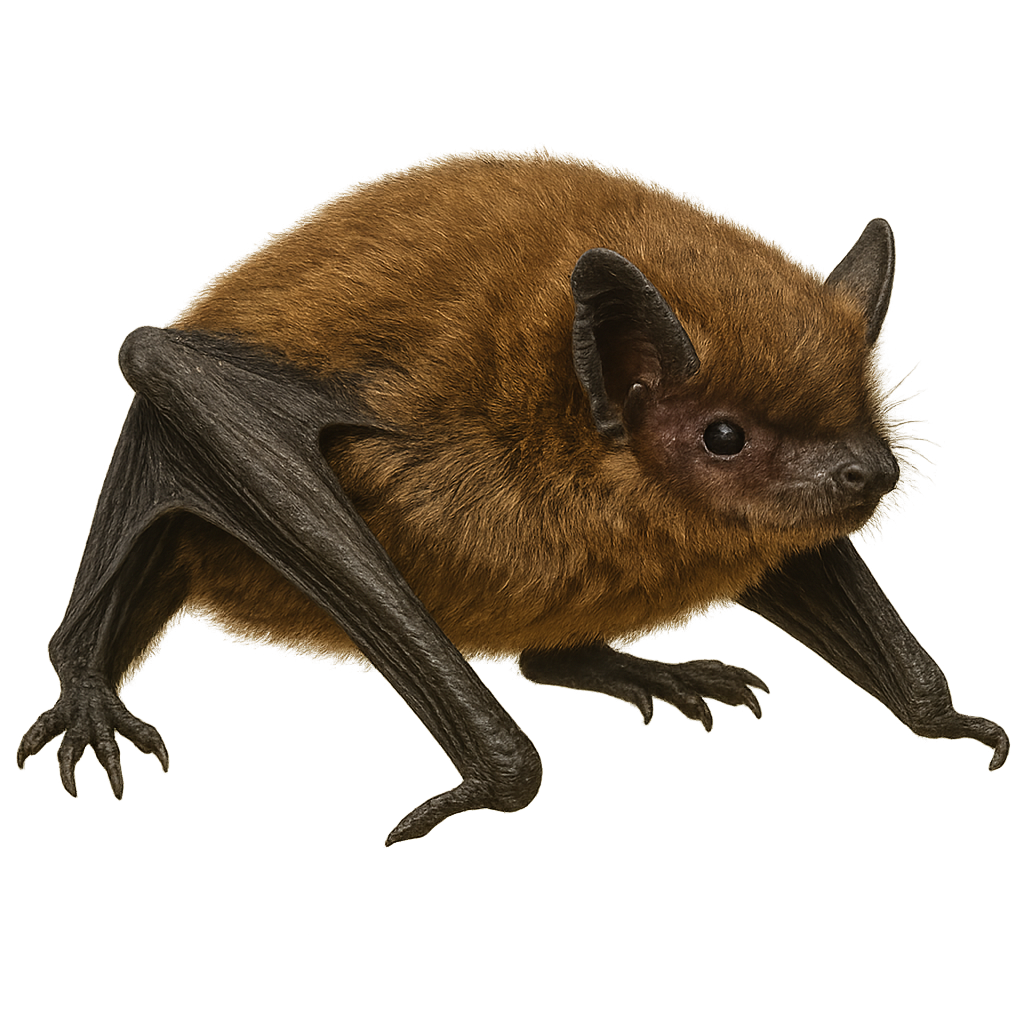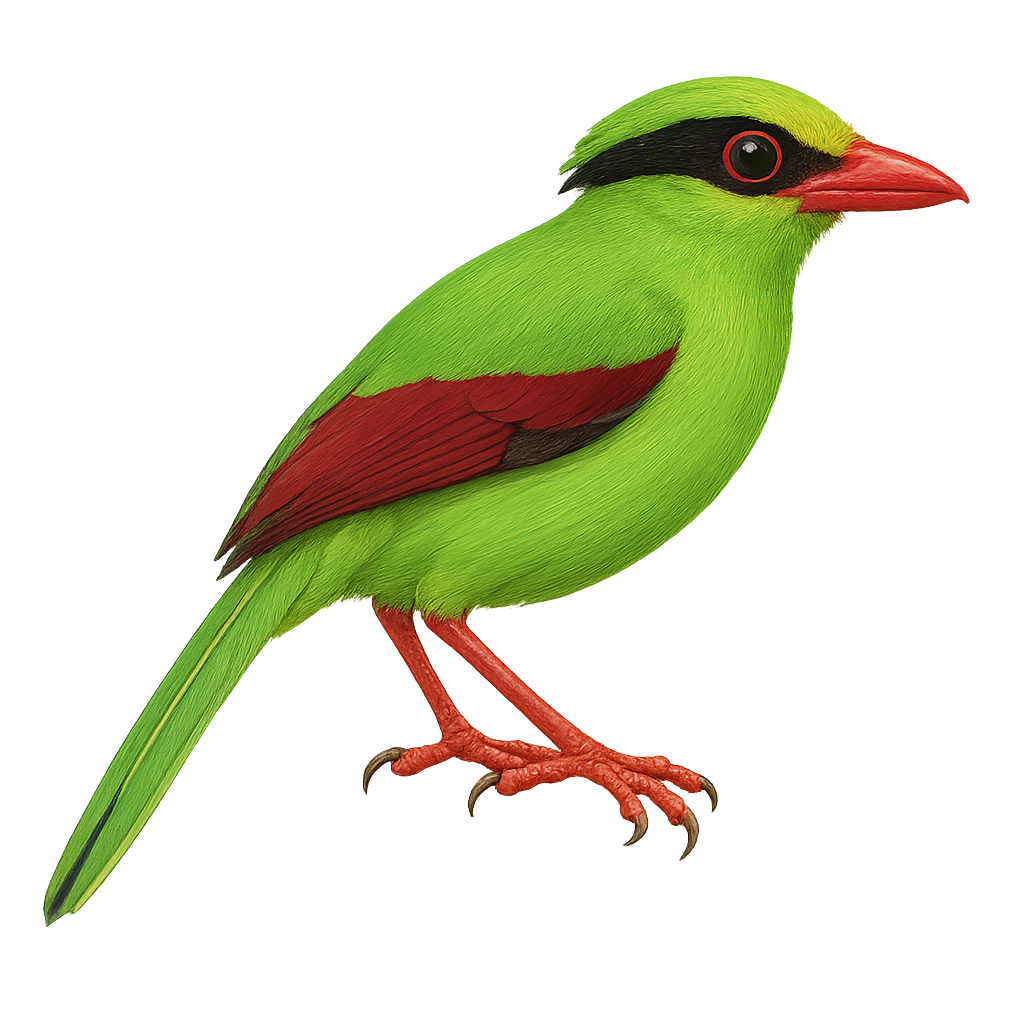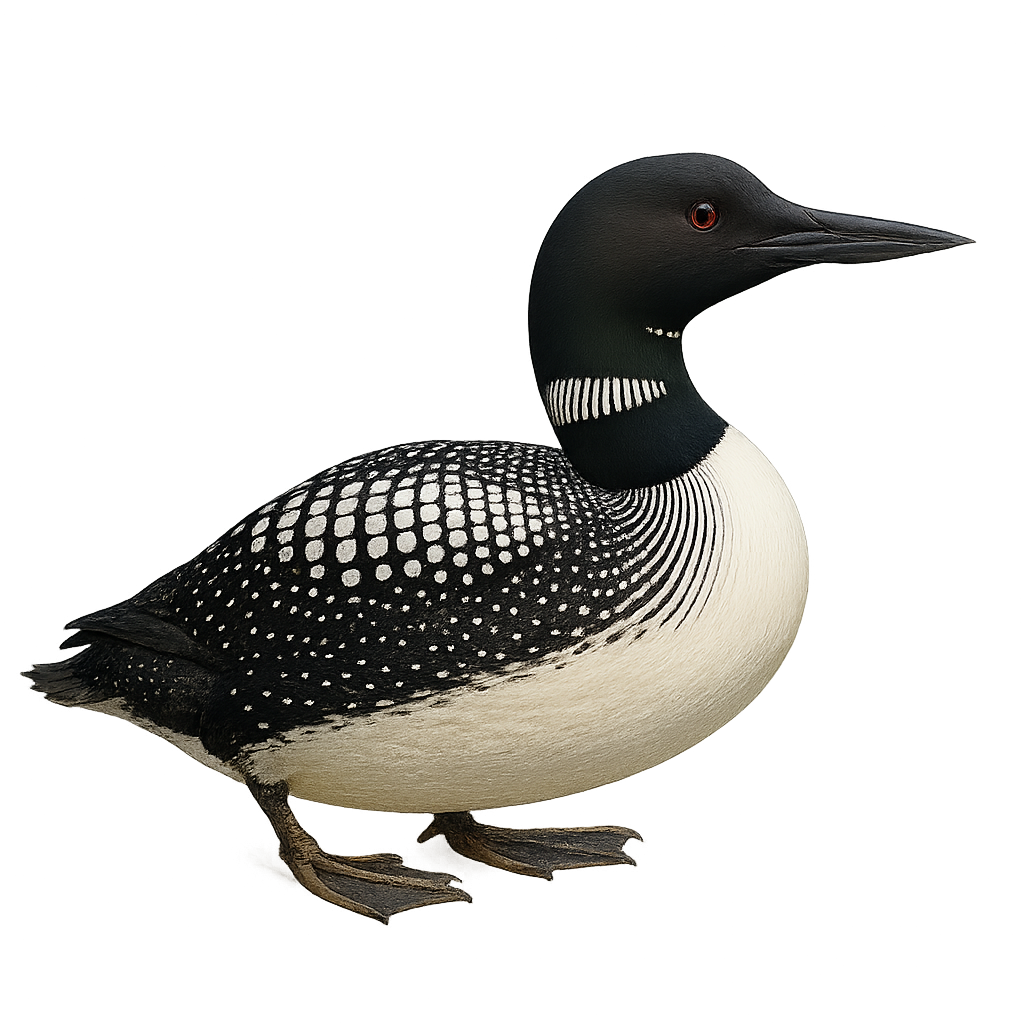The Colombian Chachalaca is a medium-sized bird, measuring about 50 to 60 cm in length. It features an olive-brown plumage with lighter shades on the belly and a long, rounded tail. This bird is often seen in small groups in the tropical and subtropical forests of Colombia, where it primarily feeds on fruits, leaves, and flowers. Although its flight is somewhat clumsy, it can move swiftly through dense vegetation. The Colombian Chachalaca plays an important role in seed dispersal, thus aiding forest regeneration. It is also known for its loud vocalizations, often heard at dawn and dusk.
The common marmoset, Callithrix jacchus, is a small primate native to the forests of northeastern Brazil. It is characterized by its white ear tufts and ringed tail. Measuring about 20 cm in length, excluding the tail, it weighs between 250 and 350 grams. This diurnal primate lives in family groups, often consisting of 3 to 15 individuals. Its diet mainly includes tree sap, insects, fruits, and flowers. Highly agile, it moves swiftly through the canopy. Communication relies on varied vocalizations and visual signals. The common marmoset is a social animal, with behavior influenced by group hierarchy.
The Small-scaled Pangolin is an insectivorous mammal found primarily in Central and West Africa, notably in Cameroon, Gabon, and the Republic of Congo. It measures about 50 to 80 cm in length, with a tail that can reach half its body size, and weighs between 5 and 7 kg. Its body is covered with small, hard scales made of keratin, which protect it from predators. When threatened, the Pangolin curls into a ball, exposing only its scales. It primarily feeds on ants, termites, and larvae, which it captures with its long tongue. Although the Pangolin is an excellent burrower, it is vulnerable due to intensive poaching for its scales and habitat loss. It is currently listed as "vulnerable" by the IUCN.
The Chinese pangolin is a small insectivorous mammal known for its body covered with scale-like plates. Native to China and Southeast Asia, it primarily feeds on ants and termites, which it digs up using its powerful claws. It is an excellent climber, often observed in trees where it seeks shelter from predators. Due to illegal hunting and habitat loss, the Chinese pangolin is critically endangered.
The Clouded Leopard is a medium-sized cat primarily found in the tropical and subtropical forests of Southeast Asia, notably in India, Nepal, Bhutan, Thailand, Malaysia, and Indonesia. It measures between 50 and 75 cm in length, with a tail ranging from 60 to 90 cm, and weighs between 12 and 20 kg. Its coat is characterized by spots and rosette patterns that help it blend perfectly into the dense vegetation of its habitat. The Clouded Leopard is an excellent climber and spends much of its time in trees, hunting birds, squirrels, monkeys, and small deer. Although the Clouded Leopard's population remains relatively stable, it is threatened by habitat loss, poaching, and forest fragmentation. This species is currently listed as "vulnerable" by the IUCN.
The Congo Peafowl, or Afropavo congensis, is a rare and fascinating bird species endemic to the tropical forests of the Democratic Republic of the Congo. This magnificent bird is distinguished by its iridescent plumage with metallic hues of blue, green, and bronze. Unlike its Asian cousin, the Indian Peafowl, the Congo Peafowl is smaller and less flamboyant but equally captivating. Males display a distinctive crest and a relatively short tail, while females have duller plumage, aiding their camouflage in dense vegetation. These birds are primarily terrestrial, feeding on seeds, fruits, and small invertebrates. Their discreet behavior and restricted habitat make them difficult to observe, but their conservation is crucial for the region's biodiversity.
The Crinkle-collared Manucode is a fascinating bird endemic to the tropical forests of New Guinea. It is distinguished by its iridescent black plumage with metallic sheen and a frizzled feather collar around its neck. This medium-sized bird, measuring about 42 cm, is known for its complex and melodious vocalizations. It primarily inhabits the dense forest canopy, feeding on fruits and insects. The Crinkle-collared Manucode is monogamous and forms stable pairs. Its breeding period is not well documented, but it is known to build a cup-shaped nest in trees. Although its habitat is threatened by deforestation, it is currently classified as Least Concern by the IUCN.
The Connecticut Warbler, or Oporornis agilis, is a migratory bird belonging to the Parulidae family. It is characterized by its subtle plumage, with an olive back and bright yellow belly. Its head is gray with a distinctive white eye-ring. This bird primarily inhabits the boreal forests of Canada and the northern United States during the breeding season, migrating to South America for the winter. Often elusive, it prefers dense habitats, making it challenging to spot. The Connecticut Warbler feeds mainly on insects and larvae, foraging in leaf litter. Its population is stable, but it faces threats from habitat loss due to deforestation.
The Canada Warbler is a small songbird known for its vibrant plumage and presence in North American forests. It features a bright yellow breast, contrasting with a gray head adorned with a distinctive black necklace. This migratory bird travels long distances between its breeding grounds in Canada and its wintering areas in South America. The Canada Warbler prefers moist forest habitats, often near watercourses, where it primarily feeds on insects. Although its song is melodious and easily recognizable, it can be challenging to spot due to its discreet behavior and preference for dense, shaded areas.
The Common Yellowthroat, Geothlypis trichas, is a small songbird in the Parulidae family. It is easily recognized by its distinctive black mask that contrasts with its bright yellow throat. Males sport this black mask, while females and juveniles have duller colors. It primarily inhabits marshes, wet meadows, and shrubby areas across North America. Its song is a distinctive "wichity-wichity-wichity." The Common Yellowthroat is a migratory bird, wintering in Central America and the southern United States. It feeds mainly on insects and spiders, which it captures by foraging in dense vegetation.
The collared peccary, or Pecari tajacu, is a medium-sized mammal resembling a small wild boar, primarily found in the wooded and semi-arid regions of South and Central America. It is characterized by a band of light-colored fur around its neck, giving it its name. This peccary lives in social groups of up to 20 individuals. It is omnivorous, feeding on fruits, roots, insects, and small vertebrates. Although often hunted for its meat and hide, it plays an important ecological role by dispersing seeds and regulating insect populations. Its ability to adapt to various habitats makes it a resilient species, though it is sometimes threatened by deforestation.
The Common Spadefoot, scientifically known as Pelobates fuscus, is a discreet and fascinating amphibian. It is characterized by its smooth skin and brownish coloration, often speckled with dark spots. This toad has powerful hind legs adapted for digging into the soil, allowing it to quickly burrow when threatened. Primarily nocturnal, it emerges from its burrow to feed on insects and other small invertebrates. Its natural habitat includes sandy areas and wet meadows, providing ideal conditions for reproduction. Although its population is stable, it is sensitive to habitat destruction and water pollution.
The Cauca Guan is a rare and endemic bird of Colombia, primarily found in the humid forests of the Western Andes. This medium-sized bird, measuring about 85 cm, is distinguished by its dark brown plumage and reddish throat. It lives in small groups and feeds mainly on fruits, leaves, and flowers. Unfortunately, it is threatened by deforestation and hunting, leading to a significant decline in its population. Conservation efforts are crucial for its survival. Its call is a deep, resonant sound, often heard at dawn and dusk.
The Crested Guan is a large forest bird, measuring between 76 and 91 cm in length and weighing up to 2.4 kg. It has dark olive-brown plumage with white spots on the neck and chest, a rufous rump and belly, and a bushy crest on its head. Its throat features a large red wattle, and the skin around the eye is bluish-gray. Social in nature, it lives in pairs or family groups of 6 to 12 individuals, feeding on fruits and young leaves in the trees. It builds its nest in trees, where the female lays two or three white eggs. Although classified as Near Threatened by the IUCN, it is vulnerable to habitat loss and hunting.
The chukar partridge is a medium-sized bird (30–35 cm), with grey-brown plumage barred with black and white, featuring a glossy black cap and eye-stripe. Native to arid regions of Asia and introduced in North America, it inhabits rocky slopes, scrublands and fallow fields, feeding on seeds, leaves, and insects. During the breeding season (March 1 to July 31), the male performs formal courtship displays and defends his territory with calls and rapid chases.
The Crimson Rosella, or Platycercus elegans, is a vibrant bird native to Australia. It is easily identified by its bright red plumage, contrasted with blue feathers on its wings and tail. Juveniles have a duller, often greenish plumage that transitions to the vivid colors of adults. It primarily inhabits wet forests, woodlands, and urban gardens. Sociable by nature, it often moves in small groups. Its diet is varied, including seeds, fruits, flowers, and insects. Although its habitat is threatened by deforestation, it remains relatively common. Its adaptability to human-modified environments aids its survival.
The Common Warthog is a wild mammal native to Sub-Saharan Africa. It measures about 1.2 to 1.5 meters in length, with a shoulder height of 60 to 80 cm, and weighs between 50 and 150 kg. It is easily recognizable by its broad face and large curved tusks, which serve as both a defense mechanism and a tool for digging. Its fur is generally gray or light brown, and it has thick, rough skin. The Common Warthog primarily lives in savannas, grasslands, and open forests, where it feeds mainly on roots, fruits, insects, and small animals. It is a social animal, living in groups, and is mainly nocturnal. Although the Common Warthog is widespread and its population is stable, it is sometimes affected by hunting and habitat loss.
The Trichosurus vulpecula, commonly known as the common brushtail possum, is an arboreal marsupial native to Australia. It has dense, soft fur, usually grey, and a prehensile tail that aids in tree navigation. This nocturnal omnivore feeds on leaves, fruits, flowers, and occasionally insects. Well-adapted to urban environments, it thrives even in human-inhabited areas. The brushtail possum plays an important ecological role as a seed disperser and pollinator. However, it can sometimes be considered a pest due to its feeding habits and adaptation to urban settings.
The Common Sunbird-Asity, or Neodrepanis coruscans, is a small bird endemic to Madagascar, known for its vibrant plumage and fascinating behaviors. It primarily inhabits the island's humid tropical forests, where it feeds mainly on nectar, but also on insects and spiders. This small bird features bright yellow plumage with metallic sheens, making it easily identifiable. Males, in particular, display more vivid colors during the breeding season to attract females. Though discreet, the Common Sunbird-Asity plays a crucial role in pollinating local plants. Its population is stable, but deforestation poses a potential threat to its natural habitat.
The crabeater seal, Lobodon carcinophaga, is a marine mammal primarily found in the cold waters of Antarctica. It is easily identifiable by its light grey coat, often speckled with darker spots. This seal is well adapted to its icy environment, with a thick layer of blubber that insulates it from the cold. It mainly feeds on krill, which it filters using its specialized teeth. Crabeater seals are often seen in large groups on the ice floes, where they rest and breed. Although they are quite numerous, their population is monitored due to climate changes affecting their natural habitat.
The Chestnut Woodpecker, or Celeus elegans, is a captivating bird native to the tropical forests of South America. It is characterized by its striking reddish-brown plumage and distinctive crest. Its medium size and sturdy beak allow it to bore into wood to find its food, mainly consisting of insects and larvae. Often seen in pairs or small groups, it moves nimbly through the dense canopy. Although its habitat is threatened by deforestation, the Chestnut Woodpecker remains relatively common in some areas. Its call is a mix of sharp cries and drumming on tree trunks, making it easily noticeable to keen observers.
The Comoro Blue Pigeon, or Alectroenas sganzini, is an endemic bird of the Comoros, known for its striking blue plumage and distinctive red head. Measuring about 30 cm in length, it is characterized by its robust body and rounded wings. This bird prefers dense forests and wooded areas, where it primarily feeds on fruits, seeds, and small invertebrates. Although its habitat is limited, it adapts well to environmental changes. However, deforestation and hunting pose potential threats to its survival. Its suspicious nature makes it difficult to observe, but it is often heard due to its soft and melodious song.
The Common Wood Pigeon, or Columba palumbus, is one of the largest pigeons in Europe, easily identifiable by its large size and distinctive white markings on its neck and wings. It has a grey-blue plumage with a pinkish breast and greenish neck sheen. Often seen in parks, gardens, and forests, it feeds mainly on seeds, fruits, and young shoots. Its flight is strong and direct, often accompanied by loud wing beats. The Wood Pigeon is also known for its soft, soothing cooing, which often echoes through woods and countryside.
The chaffinch is a small songbird found primarily in Europe and Western Asia. It is easily recognizable by its colorful plumage, with a brown back, pink breast, and beige belly. This passerine bird feeds on seeds, berries, and insects, and is commonly seen in forests, gardens, and parks. The chaffinch is also known for its melodious song, which varies depending on the region and season.
The Crested Guineafowl, or Guttera edouardi, is a medium-sized terrestrial bird known for its distinctive crest and black plumage dotted with white spots. It primarily inhabits the humid tropical forests of East Africa, moving in small groups in search of food. Its diet is varied, including seeds, insects, and small invertebrates. Although generally discreet, it can be noisy when disturbed. The Crested Guineafowl plays an important role in the ecosystem by helping control insect populations and dispersing seeds. Its ability to adapt to different habitats allows it to survive in changing environments, although deforestation poses a threat to some of its populations.
The common pipistrelle is a small bat widely distributed across Europe. It measures about 3.5 to 5 cm in length with a wingspan of 18 to 25 cm. Its fur is dark brown, and it is characterized by its short, rounded ears. Often seen flying at dusk, it hunts insects near water bodies or forests, using echolocation to navigate and capture prey. The common pipistrelle is an important indicator of ecosystem health, contributing to insect population control. It hibernates during winter in shelters like caves or abandoned buildings.
The Common Green Magpie, scientifically known as Cissa chinensis, is a striking bird with predominantly green plumage accented by shades of blue and yellow. Its head features distinctive black feathers, and its beak is a vivid red. This bird primarily inhabits the dense tropical forests of Southeast Asia, where it feeds on insects, small reptiles, and fruits. Known for its discreet behavior, it blends seamlessly into the dense foliage. The Common Green Magpie is a social bird, often seen in small groups. Although its habitat is threatened by deforestation, it remains relatively common in some areas.
The Common Loon is a seabird primarily found in the cold waters of the North Atlantic, particularly in North America and Northern Europe. It measures about 60 to 70 cm in length, with a wingspan of 100 to 120 cm, and weighs between 1.5 and 2.5 kg. Its plumage is mainly black and white, with a dark back, white breast, and black head, giving it a distinctive appearance. The Common Loon is an exceptional diver, primarily feeding on fish and crustaceans, which it catches by diving deeply underwater. It is also known for its long migrations, moving to warmer areas during the winter. Although its population remains relatively stable, this species can be threatened by pollution, human disturbances, and habitat loss.
The Chestnut-crowned Babbler is a sociable and gregarious bird, primarily found in Australia. It is characterized by its chestnut-colored head contrasting with its brown body and darker wings. Measuring about 22 cm, it is often seen in noisy groups, moving around in search of food. It mainly feeds on insects, small invertebrates, and occasionally seeds. This bird is known for its elaborate nests, often built in colonies. It prefers arid and semi-arid habitats, such as open woodlands, scrublands, and sparse forests. Although its conservation status is currently of "least concern," habitat degradation could pose a future threat.
The Crestless Porcupine is a large nocturnal mammal primarily found in sub-Saharan Africa, in tropical forests and savannas. It measures between 60 and 80 cm in length, with a tail of 20 to 30 cm, and weighs between 15 and 30 kg. Its fur is primarily made up of rigid, long, sharp quills covering its back, sides, and tail. At the tip of its tail, it has modified quills that produce a distinctive sound when shaken, warning predators of its presence. The Crestless Porcupine is herbivorous and primarily feeds on roots, bark, fruits, and leaves. While its population remains relatively stable, it can be threatened by habitat destruction and hunting.





